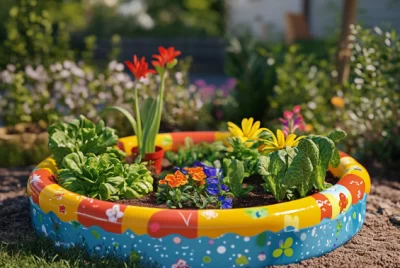Hydroponic Mint: The Future of Sustainable Herb Cultivation
Introduction
Hydroponic mint is revolutionizing the way we think about growing herbs. It’s a method that skips the soil, using nutrient-rich water to cultivate mint, leading to a fascinating blend of agriculture and technology. This innovative approach isn’t just a trend; it addresses some of the pressing challenges in traditional farming, such as land scarcity and water usage. At the same time, hydroponic mint offers numerous benefits, including faster growth rates and potentially higher yields. In this article, we’re diving deep into the world of hydroponic mint, exploring how it works, its advantages, and the challenges it faces.
Understanding Mint
Characteristics of Mint Plants
Mint is more than just a fresh addition to your drinks or dishes; it’s a plant with unique characteristics. It thrives in cool, moist environments and tends to spread rapidly. This hardy nature makes mint a great candidate for hydroponic cultivation, as it adapts well to different growing conditions.
Varieties of Mint Suitable for Hydroponics
Not all mint varieties are created equal, especially when it comes to hydroponic farming. Some popular types like spearmint and peppermint are more suited to this method. They have been found to grow vigorously in water-based environments, retaining their intense flavor and aroma.
Basics of Hydroponic Systems
Overview of Hydroponic Methods
Hydroponics is a soil-less farming method where plants are grown in a water-based nutrient solution. There are several systems, including the Wick system, Deep Water Culture (DWC), Nutrient Film Technique (NFT), and more. Each has its own set of advantages and is suited for different types of plants and spaces.
Choosing the Right System for Mint
Selecting the right hydroponic system for mint isn’t a one-size-fits-all decision. Factors like space availability, budget, and the level of maintenance you’re willing to undertake play a crucial role. For beginners, a simple Wick or DWC system could be a great start, while more advanced growers might prefer NFT or Aeroponics for higher yields.
Setting Up Your Hydroponic Mint System
Equipment and Materials Needed
To start your hydroponic mint garden, you’ll need some basic equipment: a growing container, water reservoir, air pump (for certain systems), growing medium (like rock wool or clay pellets), and of course, mint cuttings or seeds. Don’t forget the nutrient solution, which is crucial for plant growth.
Step-by-Step Setup Guide
Setting up your hydroponic system is an exciting process. Begin by preparing your growing container and medium. If you’re using a system like DWC, ensure the air pump is properly installed to oxygenate the water. Then, plant the mint cuttings or seeds in the growing medium and submerge the roots in the nutrient solution. Regular monitoring is key to ensuring your plants are thriving.
In these sections, we’ve just scratched the surface of what’s possible with hydroponic mint. As you can see, it’s a fascinating blend of gardening and modern technology, offering a sustainable and efficient way to grow this popular herb. Let’s continue to explore the details and intricacies of this innovative farming method.
Planting and Growing Hydroponic Mint
Propagation of Mint for Hydroponics
The journey of hydroponic mint starts with propagation. You can begin with either seeds or cuttings. If you opt for cuttings, choose healthy stems from an existing plant, ideally about 4-6 inches long. Remove the lower leaves and place the cuttings in water until roots develop. This method is often preferred because it maintains the parent plant’s characteristics and starts producing leaves quicker than seeds.
Transplanting Mint into the System
Once your mint cuttings have developed roots or your seeds have germinated, it’s time to move them to your hydroponic system. Carefully transplant them into the growing medium, ensuring the roots have direct contact with the nutrient solution. It’s crucial to handle the roots gently to avoid damage, as this can affect the plant’s growth.
Hydroponic Mint Nutrient Management
Essential Nutrients for Mint
Mint, like all plants, requires specific nutrients to thrive. Nitrogen, phosphorus, and potassium are the big three, but don’t overlook calcium, magnesium, and sulfur, along with trace elements like iron, manganese, and zinc. These nutrients are typically provided in a balanced hydroponic nutrient solution, tailored to support leafy herb growth.
Preparing and Managing Nutrient Solutions
Consistency is key in nutrient management. Prepare your solution according to the manufacturer’s instructions and monitor the nutrient levels regularly. Over time, plants will deplete certain nutrients, so it’s important to replenish the solution and adjust its concentration as needed. This ensures your mint plants receive all the necessary nutrients throughout their growth cycle.
Hydroponic Mint Light and Temperature Requirements
Ideal Lighting Conditions for Hydroponic Mint
Mint loves light but doesn’t require intense, direct sunlight. In hydroponics, this translates to about 10-14 hours of artificial light daily, depending on the stage of growth. LED or fluorescent grow lights are excellent choices, offering the right spectrum of light without excessive heat.
Temperature Control for Optimal Growth
The ideal temperature for growing hydroponic mint ranges from 65 to 70 degrees Fahrenheit. Consistent temperatures not only promote healthy growth but also help maintain the aromatic oils in the leaves, which are essential for that distinctive mint flavor. Monitoring and regulating your growing environment’s temperature is crucial, especially if you’re growing indoors.
Water and pH Management
Water Quality and Its Importance
Water is the lifeblood of hydroponic systems. Use clean, preferably filtered water to avoid contaminants that can harm your plants or disrupt the nutrient balance. Regularly changing the water in your system also helps prevent the buildup of harmful pathogens.
pH Balancing in Hydroponic Systems
pH plays a vital role in how well your plants can absorb nutrients. For hydroponic mint, aim for a pH range between 5.5 and 6.5. Regular testing and adjustments, using pH up or down solutions, are essential to maintain this balance. A stable pH ensures your mint plants can access all the nutrients in the solution efficiently.
In these sections, we’ve delved into the heart of growing hydroponic mint, covering crucial aspects like propagation, nutrient management, and environmental conditions. By understanding and managing these factors, you can ensure your hydroponic mint thrives, providing fresh, aromatic leaves for your culinary creations or simply enjoying the lush greenery. Next, let’s look at some of the challenges you might encounter and how to harvest your bounty.
Common Challenges and Solutions
Dealing with Pests and Diseases
Even in hydroponics, mint isn’t immune to pests and diseases. Common issues include spider mites, aphids, and fungal infections. The key to managing these is early detection and action. Use organic pesticides when necessary, and always keep your growing area clean to reduce the risk of infestations and diseases.
Overcoming Nutrient Deficiencies
Nutrient deficiencies can manifest as discolored or stunted leaves. To prevent this, regularly check and adjust your nutrient solution. If you notice signs of deficiency, a quick response with the right nutrient supplement can save your plants and ensure continuous healthy growth.
Hydroponic Mint Harvesting and Post-Harvest Care
When and How to Harvest Hydroponic Mint
Harvesting mint at the right time is crucial for the best flavor. The ideal time is just before it flowers when the leaves are most aromatic. Cut the stems about an inch above the growing medium, allowing enough room for regrowth. Regular harvesting encourages fuller, bushier plants.
Post-Harvest Handling and Storage
After harvesting, rinse the mint leaves gently and pat them dry. For short-term use, keep them in a container in the refrigerator. For longer storage, you can dry the leaves or freeze them in ice cube trays for a convenient, longer-lasting supply.
Environmental Impact and Sustainability
The Environmental Benefits of Hydroponic Farming
Hydroponic mint farming is not just about efficient space use; it’s also about water conservation and reduced pesticide usage. These factors contribute significantly to the sustainability and environmental friendliness of this farming method.
Challenges and Future Perspectives
While hydroponics offers many benefits, it also faces challenges like high initial setup costs and energy demands, particularly for lighting and temperature control. Future developments aim to address these challenges, making hydroponics more accessible and efficient.
Conclusion
Hydroponic mint represents a blend of tradition and innovation in agriculture. We’ve explored how to grow mint in soil-less systems, the essential requirements for its growth, and the common challenges faced along the way. This method of cultivation not only saves space and conserves water but also offers a sustainable solution for producing fresh, aromatic mint. Whether you’re a hobbyist looking to add some green to your urban space or a commercial grower aiming for high yields, hydroponic mint farming is an exciting and rewarding venture.
As we look to the future, hydroponics holds great promise in addressing global food production challenges. With advancements in technology and more sustainable practices, it’s not just about growing mint – it’s about growing a greener, more efficient world.
Frequently Asked Questions About Hydroponic Mint
1. Can I start growing hydroponic mint using seeds, and how long does it take to germinate?
Yes, you can start hydroponic mint with seeds. Typically, mint seeds take about 10 to 15 days to germinate. Ensure they are kept moist and at a consistent temperature of around 65 to 70 degrees Fahrenheit for optimal germination.
2. What are the most common pests in hydroponic mint cultivation, and how can I control them?
Common pests in hydroponic mint include spider mites and aphids. To control them, maintain cleanliness in your growing area, and use organic pesticides if necessary. Regularly inspecting your plants helps catch infestations early, making them easier to manage.
3. How often should I change the nutrient solution in my hydroponic mint system?
It’s recommended to change the nutrient solution in your hydroponic system every two to three weeks. This helps prevent nutrient imbalances and the buildup of harmful pathogens, ensuring your mint plants receive a fresh supply of essential nutrients.
4. What is the best way to harvest hydroponic mint for maximum flavor?
Harvest hydroponic mint just before it starts flowering, as this is when the leaves are most aromatic. Cut the stems about an inch above the growing medium, which encourages regrowth and leads to a fuller, bushier plant.
5. Are there specific environmental benefits of growing mint hydroponically compared to traditional soil farming?
Yes, hydroponic mint farming has several environmental benefits, including significant water conservation, as hydroponic systems use less water than soil-based cultivation. It also allows for reduced use of pesticides and can be implemented in urban settings, reducing the need for transportation and associated emissions.




